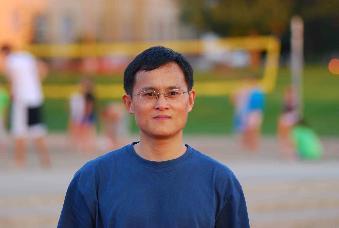
Gao Xianlong
professor Supervisor of Doctorate Candidates Supervisor of Master's Candidates
Honors and Titles : Program for New Century Excellent Talents in University
Gender : Male
Alma Mater : University of Science and Technology of China
Education Level : Graduate student graduate
Degree : Doctorate
Status : 在岗
School/Department : College of Mathematics, Physics and Information Engineering
Date of Employment : 2007-03-29
Discipline : physics
Business Address : Science Building 29#-429
Contact Information : 0579-82298507, 667810(short)
Email :
Hits :
First Author : 陆展鹏
Affiliation of Author(s): 数理与信息工程学院
Date of Publication : 2017-01-01
Document Type : 期刊
Journal : 物理学报
Volume: 第66卷
Issue : 第12期
Page Number : 126701
ISSN : 1000-3290
Translation or Not : no
Key Words : 热力学Bethe-ansatz方程组;压缩比;Hubbard模型;化学势泛函理论
Abstract : 通过数值方法求解了有限温度下一维均匀Hubbard模型的热力学Bethe-ansatz方程组,得到了在给定温度和相互作用强度情况下,比热c、磁化率χ和压缩比κ随化学势μ的变化图像.基于有限温度下一维均匀Hubbard模型的精确解,利用化学势(μ)-泛函理论研究了一维谐振势下的非均匀Hubbard模型,给出了金属态和Mott绝缘态下不同温度情况时局域粒子密度n_i和局域压缩比_κi随格点的变化情况.
Born at Anhui Province, Feixi, Ph.D., Professor,
In 1998, Anhui University Department of Applied Physics, Theoretical Physics, Bachelor, Master,
In 2001, University of Science and Technology of China, Department of Astronomy and Applied Physics, Condensed matter physics, Ph.D
Research Interests:
1. Quantum properties of low-dimensional Fermi gas: Studying the exotic quantum phases due to the fermion species, pairing, the external potential, and the interaction;
2. Density functional theory of low-dimensioanl system;
Homogeneous low-dimensional systems are strictly solvable in many cases (eg using the Bethe-Ansatz technique, Bosonization, etc.), and for the inhomogeneous systems they are more complicated and can often be solved by using density functional theory. We study the applications of the density functional theory in the model system. Related examples can be found in the application of density functional theory in the inhomogeneous Hubbard model, non-uniform Lieb-Wu model, Anderson model and Bose-Fermi mixed system. The same idea can be used to deal with disordered problems, finite temperature effects, various dynamical problems;
3. Numerical study of low-dimensional strong correlation system: By means of strict diagonalization and numerical renormalization group, we discuss the ground state, especially the correlation function of low-dimensional systems;
4. Excitation properties of low-dimensional strongly correlation systems: studying low energy excitation such as spin-charge separation phenomenon, spin-drag effect due to the relative motion of different types of fermions, and the use of variational methods and local density approximation to solve the finite temperature, low energy excitation mode.
For students:
I am currently tutoring several graduate students for scientific research. At the same time, I am organizing and supervising a number of junior undergraduates for research and develop their research interests.
See details at http://physics.zjnu.edu.cn/2016/0303/c2480a26226/page.htm
Research team http://course.zjnu.cn/qm/gao/